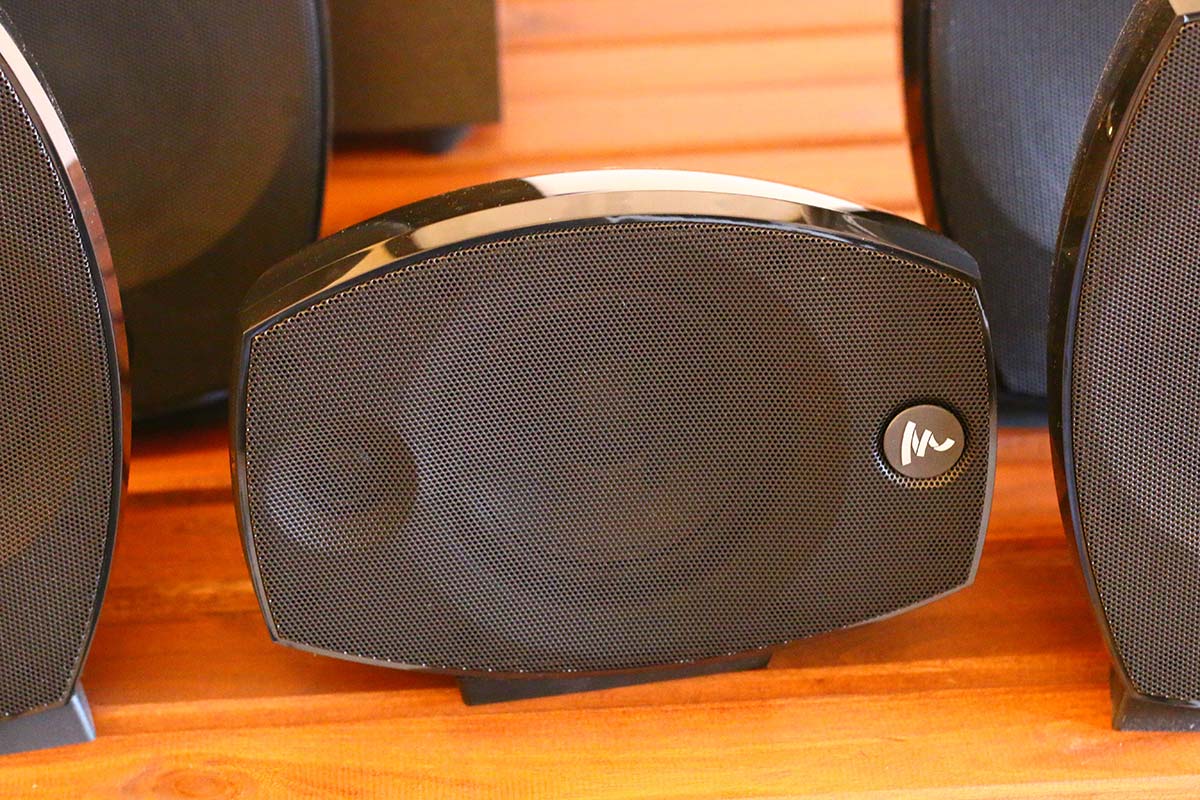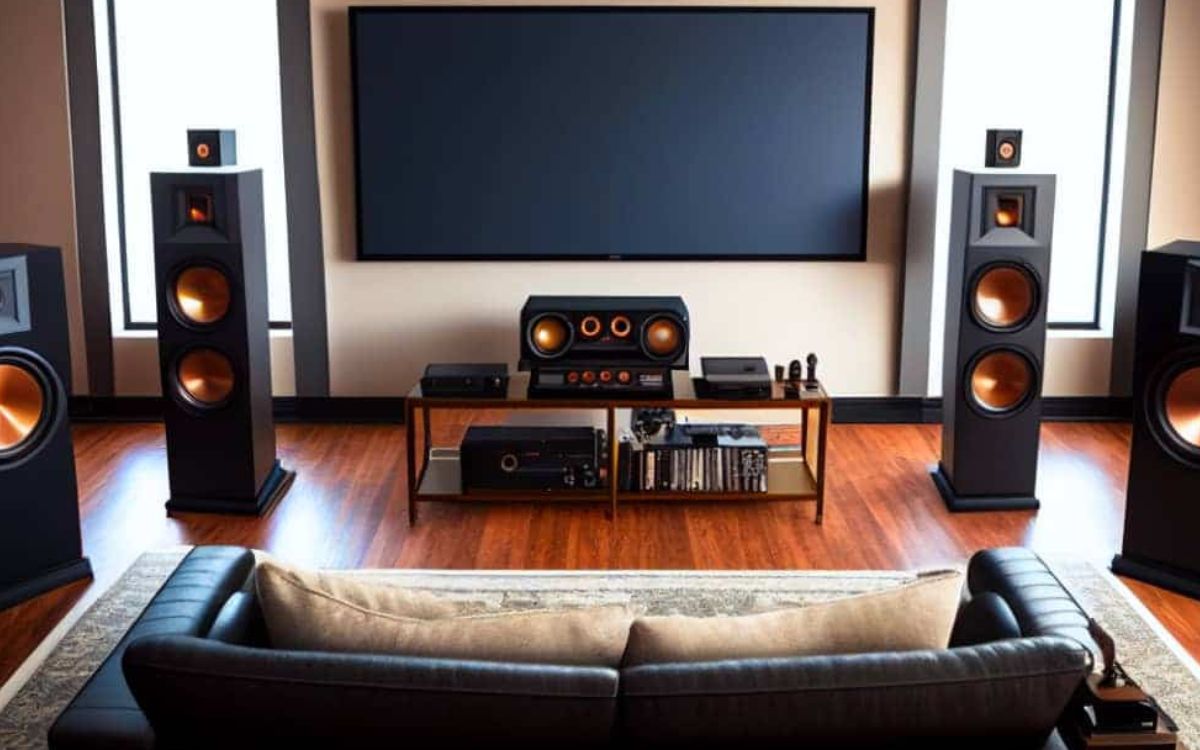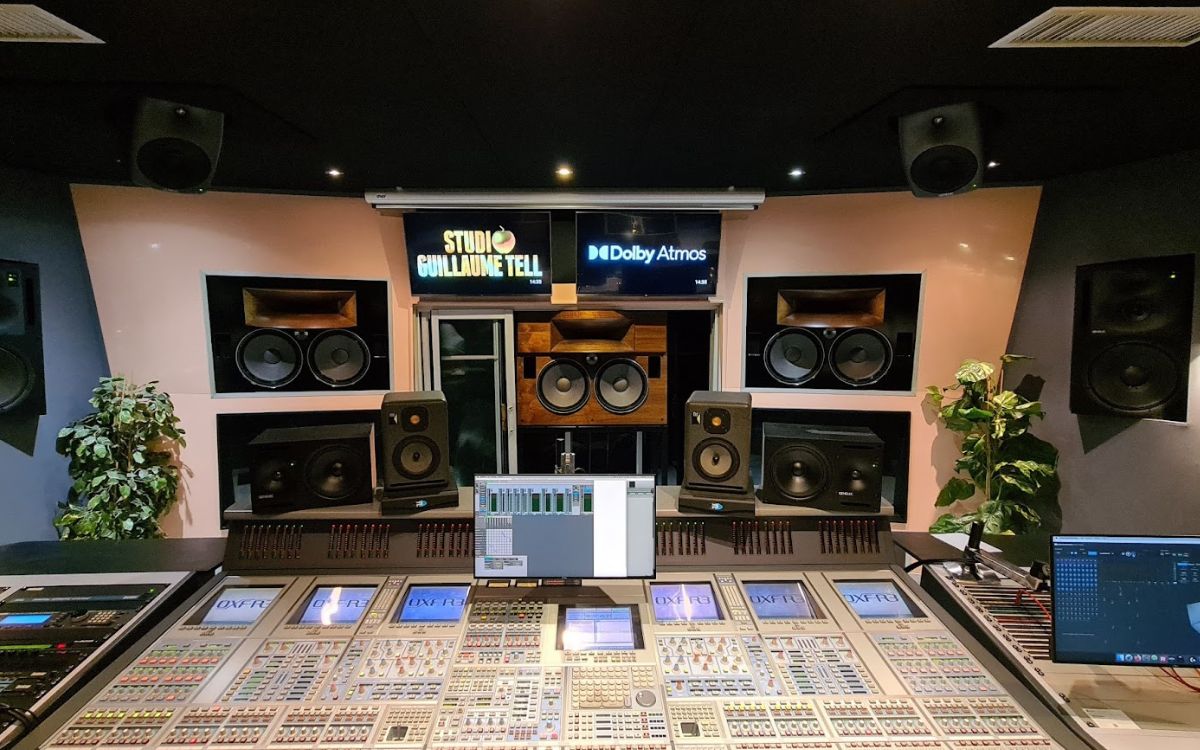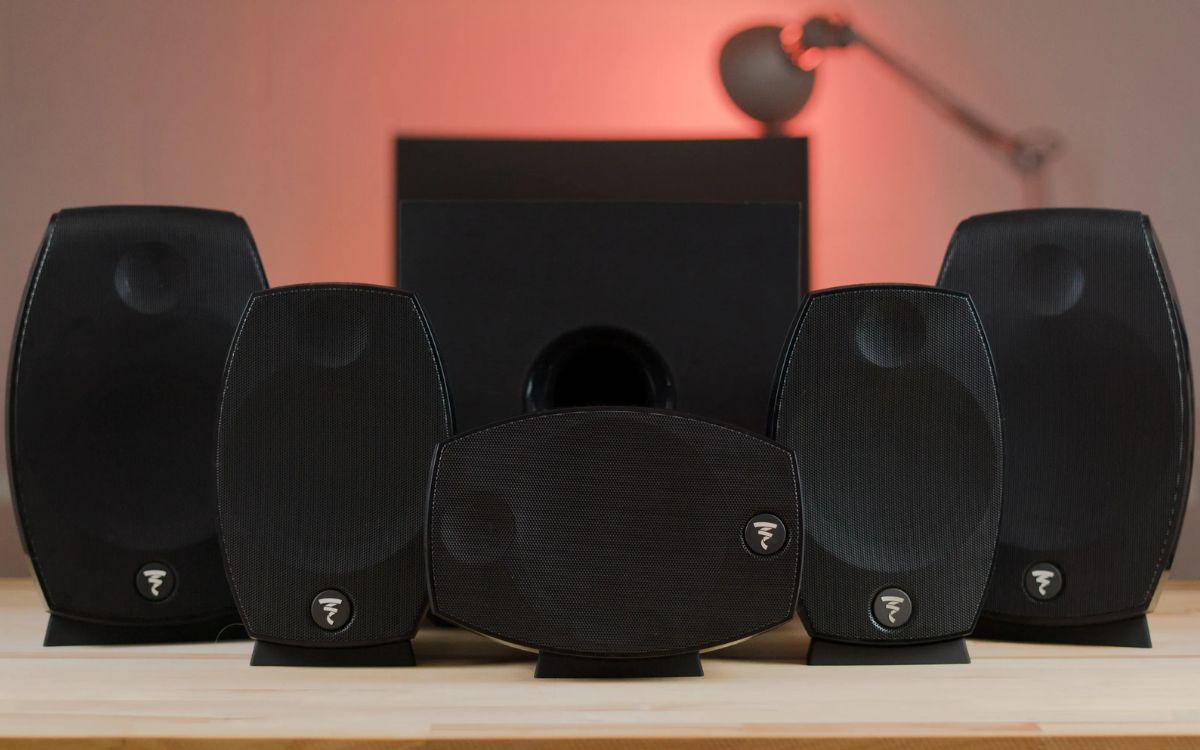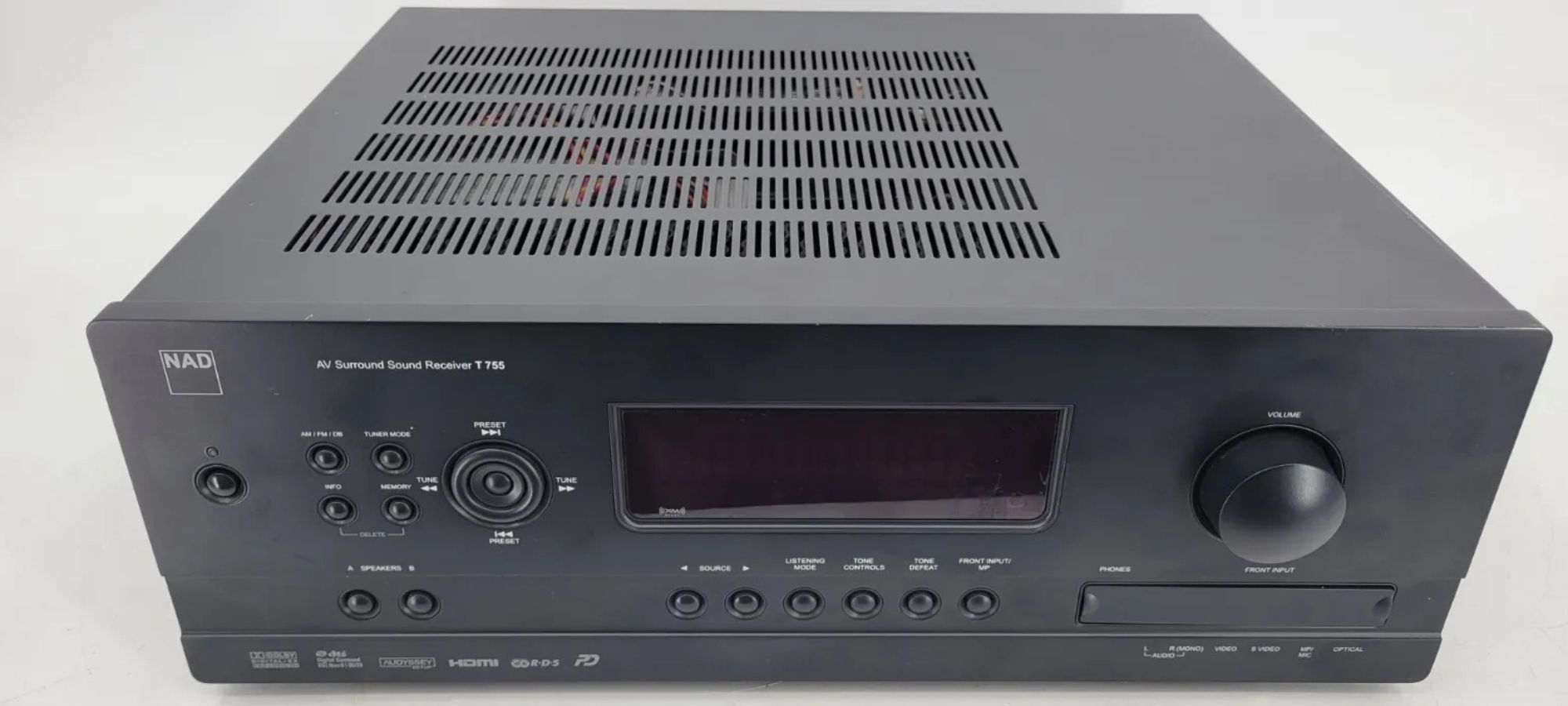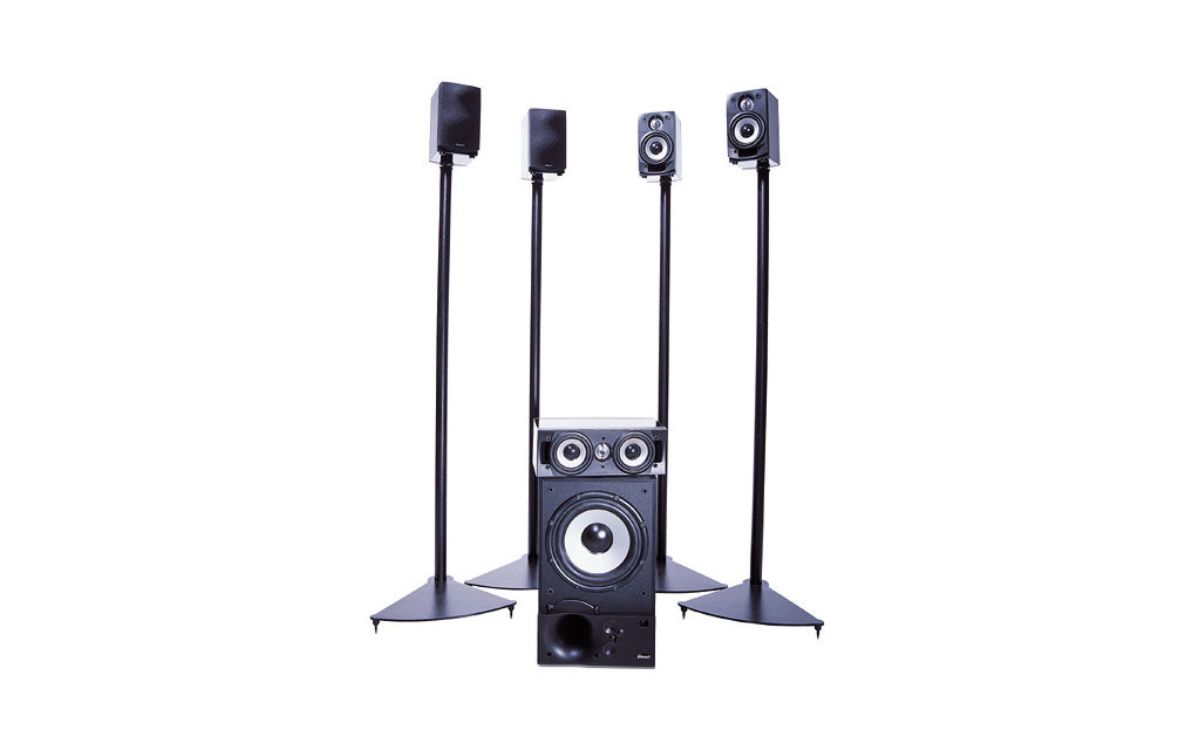Home>Production & Technology>Surround Sound>What Is 4.1 Surround Sound


Surround Sound
What Is 4.1 Surround Sound
Modified: January 22, 2024
Discover the wonders of 4.1 surround sound and elevate your audio experience. Immerse yourself in the richness and depth of sound with surround sound technology.
(Many of the links in this article redirect to a specific reviewed product. Your purchase of these products through affiliate links helps to generate commission for AudioLover.com, at no extra cost. Learn more)
Table of Contents
Introduction
Surround sound technology has revolutionized the way we experience audio. Whether you’re watching your favorite movie, listening to music, or playing video games, a surround sound system can transport you into a world of immersive sound. One of the most popular formats of surround sound is 4.1 surround sound.
But what exactly is 4.1 surround sound? How does it work? And what are its benefits? In this article, we will explore all of these questions and more, providing you with a comprehensive understanding of 4.1 surround sound systems.
4.1 surround sound, also known as quadraphonic sound, is a system that consists of four main speakers and one subwoofer. The “4” in 4.1 represents the four main speakers, while the “.1” represents the subwoofer. This configuration allows for a more immersive and dynamic audio experience, with enhanced clarity and depth.
Whether you’re an avid movie lover, a music enthusiast, or a dedicated gamer, a 4.1 surround sound system can elevate your entertainment experience to a whole new level. By positioning speakers strategically around the room and using a dedicated subwoofer, 4.1 surround sound delivers a more accurate and realistic audio environment.
With 4.1 surround sound, you can feel the rumble of explosions, hear the subtle details in music, and experience the full range of audio effects in your favorite games. It creates a three-dimensional soundscape that envelops you, making you feel like you’re right in the middle of the action.
In the next sections, we’ll delve deeper into the components of a 4.1 surround sound system, how it works, and how to set it up. So, let’s strap in and explore the world of 4.1 surround sound!
Definition of 4.1 Surround Sound
4.1 surround sound is a specific configuration of surround sound that is designed to provide a more immersive and realistic audio experience. It is an extension of the traditional stereo system, adding additional speakers and a dedicated subwoofer to create a more spatial and dynamic audio environment.
The “4” in 4.1 surround sound refers to the four main speakers, which are positioned strategically around the room to deliver audio from different directions. These speakers are typically placed in front of the listener, with two speakers on the left side and two speakers on the right side. They are responsible for delivering the mid-range and high-frequency sounds.
The “.1” in 4.1 surround sound represents the subwoofer, which is responsible for handling the low-frequency sounds and providing that deep, rumbling bass. The subwoofer adds depth and impact to the audio, making explosions, musical bass lines, and other low-end effects more pronounced and immersive.
4.1 surround sound systems are often used in home theater setups, where they enhance the cinematic experience by creating a more realistic soundstage. With 4.1 surround sound, you can hear the dialogue coming from the center speakers, the ambient sounds and effects from the front and rear left speakers, and the musical score or soundtrack from the front and rear right speakers.
This setup allows for a more accurate positioning of sounds, creating a sense of depth and spaciousness. It gives you the sensation of being in the middle of the action, whether you’re watching a thrilling movie, enjoying a concert, or playing an intense video game.
It’s important to note that 4.1 surround sound is different from other configurations, such as 5.1 or 7.1 surround sound. While the latter provide additional speakers for a more immersive experience, 4.1 surround sound still delivers superior audio quality compared to standard stereo systems without the added complexity and cost of extra speakers.
In the next sections, we will explore the benefits of 4.1 surround sound, the components of a 4.1 surround sound system, how it works, and how to set it up. So, let’s dive in and uncover the world of 4.1 surround sound!
Benefits of 4.1 Surround Sound
4.1 surround sound systems offer numerous benefits that enhance the audio experience, whether for movies, music, or gaming. Here are some of the key advantages of opting for a 4.1 surround sound setup:
- Immersive Audio Experience: The primary benefit of 4.1 surround sound is the immersive audio experience it provides. With speakers strategically positioned around the room, you can feel surrounded by sound, allowing you to fully immerse yourself in the content you’re enjoying.
- Enhanced Clarity and Detail: 4.1 surround sound systems deliver audio with greater clarity and detail. The additional speakers help separate different audio elements, such as dialogue, sound effects, and musical instruments, providing a more accurate representation of the original recording.
- Increased Dynamic Range: The inclusion of a dedicated subwoofer in a 4.1 surround sound system significantly enhances the dynamic range. The subwoofer reproduces low-frequency sounds with greater impact, adding depth and realism to explosions, thunder, and other bass-heavy effects.
- Spatial Sound Placement: With 4.1 surround sound, sounds can be positioned accurately in the listening area. This spatial placement allows for a more realistic auditory experience, immersing you in the action and recreating the intended soundstage as the audio engineers and creators intended.
- Improved Gaming Experience: Gamers can benefit greatly from a 4.1 surround sound system. The spatial audio cues provided by the rear speakers can enhance gameplay, allowing you to detect the location of approaching enemies or immerse yourself in the atmospheric sounds of virtual worlds.
- Enhanced Home Theater Experience: If you enjoy watching movies or TV shows at home, a 4.1 surround sound system can greatly enhance your viewing experience. You’ll feel like you’re in a theater, with the audio enveloping you and bringing the action on screen to life.
- Compatibility and Ease of Use: 4.1 surround sound systems are generally compatible with most audio and video devices, making them easy to set up and use. They are designed to work with Blu-ray players, gaming consoles, TVs, and other multimedia devices, ensuring a seamless integration into your existing entertainment setup.
With all these benefits, it’s no wonder that 4.1 surround sound systems are a popular choice for audio enthusiasts, movie lovers, and gamers alike. The next sections will delve into the components of a 4.1 surround sound system, how it works, and how to set it up. So, let’s continue our journey into the world of 4.1 surround sound!
Components of a 4.1 Surround Sound System
A 4.1 surround sound system consists of several key components that work together to deliver an immersive audio experience. Understanding these components is essential for setting up and optimizing your 4.1 surround sound system. Let’s take a closer look at each component:
- Main Speakers: The primary speakers in a 4.1 surround sound system are responsible for delivering the mid-range and high-frequency sounds. Typically, there are four main speakers: two front speakers and two rear speakers. These speakers are strategically placed around the listening area to create a sense of spatial audio.
- Subwoofer: The subwoofer is a dedicated speaker that reproduces low-frequency sounds, particularly bass. It adds depth and impact to the audio, making explosions, music bass lines, and other low-end effects more pronounced and immersive. The subwoofer is crucial for creating a balanced audio experience and enhancing the overall sound quality.
- AV Receiver: The AV (audio/video) receiver acts as the control center of the 4.1 surround sound system. It receives audio signals from various sources, such as Blu-ray players, gaming consoles, or TVs, and distributes them to the main speakers and subwoofer. The AV receiver also provides amplification for the speakers and allows for adjusting volume, tone, and other audio settings.
- Speaker Cables: To connect the main speakers and the subwoofer to the AV receiver, you’ll need speaker cables. These cables transmit the electrical signals from the receiver to the speakers, ensuring proper audio delivery. It’s important to use high-quality speaker cables to minimize signal loss and interference, resulting in optimal sound reproduction.
- Mounting Hardware: Depending on the design of your speakers, you may need mounting hardware to securely position them. Wall mounts or stands are commonly used to place the main speakers and the subwoofer in the desired locations. Mounting hardware ensures stability and optimal sound projection, allowing you to achieve the best audio performance.
- Source Devices: Source devices include any audio or video devices that provide the content you want to enjoy with your 4.1 surround sound system. This could be a Blu-ray player, a gaming console, a streaming device, or a television. Make sure your source devices have the necessary audio outputs to connect to the AV receiver.
- Remote Control: Many AV receivers come with a remote control that allows you to conveniently adjust settings, switch between audio sources, and control the overall volume of your 4.1 surround sound system. A remote control provides a user-friendly interface to manage your audio experience easily.
By understanding each component and its role in a 4.1 surround sound system, you can effectively set up and optimize your audio setup. In the next sections, we will explore how 4.1 surround sound works, the process of setting up a 4.1 surround sound system, and some popular options available on the market. So, let’s continue our journey into the world of 4.1 surround sound!
How 4.1 Surround Sound Works
Understanding how 4.1 surround sound works is key to optimizing your audio setup and fully immersing yourself in the audio experience. In a 4.1 surround sound system, the four main speakers and subwoofer work harmoniously to create a realistic soundscape. Let’s explore how each component contributes to the overall audio output:
Main Speakers: The main speakers in a 4.1 surround sound system are typically positioned strategically around the listening area. Two front speakers are placed on either side of the screen or the TV, while two rear speakers are placed behind the listener. These speakers are responsible for delivering mid-range and high-frequency sounds, such as dialogue, music, and ambient effects.
Subwoofer: The subwoofer, also known as the “.1” in 4.1 surround sound, is responsible for reproducing low-frequency sounds and providing deep, rumbling bass. It adds richness and impact to the audio, enhancing the overall immersion. The subwoofer is usually placed near the front speakers or in a central location to ensure even distribution of low-end frequencies throughout the room.
AV Receiver: The AV receiver acts as the central hub of the 4.1 surround sound system. It receives audio signals from various source devices, processes and amplifies the signals, and distributes them to the main speakers and subwoofer. The AV receiver also decodes multichannel audio formats, ensuring that the audio is correctly distributed to the appropriate speakers.
Audio Processing: 4.1 surround sound systems employ various audio processing techniques to create an immersive listening experience. These techniques include channel separation, where different audio elements are directed to specific speakers, and acoustic calibration, which ensures that the speakers are properly balanced and synchronized. Additionally, advanced sound processing technologies, such as Dolby Digital and DTS, are utilized to enhance the audio quality and spatial effects.
Listening Position: To fully experience the benefits of 4.1 surround sound, it’s important to consider the optimal listening position. The primary listening position should be centered between the front speakers and aligned with the TV or screen. This position allows for accurate sound localization and ensures that you’re in the sweet spot to enjoy the full impact of the audio effects.
By combining the main speakers and the subwoofer, 4.1 surround sound systems create a realistic and enveloping audio environment. The front speakers deliver the main audio elements, while the rear speakers add depth and spatial cues. The subwoofer enhances the low-frequency effects, adding impact and richness to the overall sound experience.
It’s also worth noting that 4.1 surround sound is compatible with both stereo and multi-channel audio sources. Stereo sources will be upmixed to utilize all the available speakers, while multi-channel sources will be divided and directed to the appropriate speakers for optimal sound placement and accuracy.
Now that you have a better understanding of how 4.1 surround sound works, the next section will guide you through the process of setting up a 4.1 surround sound system. So, let’s continue our exploration of the world of 4.1 surround sound!
Setting Up a 4.1 Surround Sound System
Setting up a 4.1 surround sound system may seem intimidating at first, but with the right steps and guidance, it can be a straightforward process. Here’s a step-by-step guide to help you set up your 4.1 surround sound system:
- Plan the Placement: Start by planning the placement of your main speakers and subwoofer. The front speakers should be placed on either side of the screen or TV, at about ear level when seated. The rear speakers should be positioned behind the listening area, facing forward. The subwoofer can be placed near the front speakers or at a central location for optimal bass distribution.
- Connect the Speakers: Use high-quality speaker cables to connect the main speakers and subwoofer to the appropriate speaker terminals on the AV receiver. Make sure to connect each speaker to the correct channel (front left, front right, rear left, rear right) as indicated on the receiver.
- Connect the AV Receiver: Connect your source devices, such as a Blu-ray player or gaming console, to the HDMI or optical inputs on the AV receiver. Use HDMI cables for video and audio, or optical cables for audio-only connections. Connect the AV receiver to your TV using an HDMI cable for video pass-through.
- Configure Audio Settings: Access the setup menu on your AV receiver and configure the audio settings. Select the appropriate speaker size and crossover settings for your main speakers and subwoofer. Set the speaker levels to ensure a balanced sound output. Some AV receivers also have automatic calibration systems that can optimize the settings automatically.
- Test the Sound: Once you’ve connected and configured the speakers, play some audio content to test the sound output. Make sure that sound is coming from all speakers and that the surround sound effects are functioning correctly. Adjust the volume and tone settings to your preference.
- Fine-tune the Placement: Listen to various audio sources and adjust the positioning of the speakers if needed. Minor adjustments in speaker placement can make a significant difference in the sound stage and imaging. Experiment with different placements to find the optimal configuration for your listening area.
- Optimize Room Acoustics: Consider optimizing the acoustics of your room to further enhance the audio experience. You can use acoustic panels, rugs, and curtains to reduce echo and improve sound absorption. Additionally, positioning furniture strategically can also help minimize sound reflections and improve the overall audio quality.
Remember to consult the user manuals for your specific equipment and follow the manufacturer’s recommendations for setup and placement. Additionally, it may be helpful to refer to online resources or seek assistance from professionals if you encounter any difficulties or have specific requirements.
With your 4.1 surround sound system properly set up, you can now enjoy an immersive audio experience that brings your favorite movies, music, and games to life. In the next section, we will explore some popular 4.1 surround sound systems available on the market, offering a range of features and options to suit different preferences and budgets. So, let’s dive into the world of 4.1 surround sound systems!
Popular 4.1 Surround Sound Systems on the Market
When it comes to choosing a 4.1 surround sound system, there are several options available on the market, each offering unique features and capabilities. Here are some popular 4.1 surround sound systems that you may consider:
- Bose Acoustimass 10 Series V: Known for their audio quality, Bose offers the Acoustimass 10 Series V, a 4.1 surround sound system that combines compact speakers with powerful bass performance. This system is designed to deliver room-filling sound and comes with a wireless subwoofer for added convenience.
- Sony HT-RT3: The Sony HT-RT3 is a budget-friendly 4.1 surround sound system that provides a balanced audio experience. It includes a soundbar, two rear speakers, and a subwoofer, delivering clear dialogue, immersive effects, and deep bass. This system also supports Bluetooth connectivity for wireless music streaming.
- JBL Bar 5.1: If you’re looking for a versatile and powerful option, the JBL Bar 5.1 is worth considering. This 4.1 surround sound system comes with a soundbar, two detachable wireless speakers, and a wireless subwoofer. The detachable speakers can be placed around the room to create a truly immersive listening experience.
- Yamaha YHT-4950UBL: Yamaha provides the YHT-4950UBL, a comprehensive 4.1 surround sound system that includes a 5-channel AV receiver, four speakers, and a subwoofer. It supports the latest audio formats and features Yamaha’s exclusive audio technologies for enhanced sound quality. The system also includes built-in Bluetooth for wireless audio streaming.
- Klipsch Cinema 600: The Klipsch Cinema 600 is a high-performance 4.1 surround sound system that delivers dynamic and detailed sound reproduction. It consists of a soundbar, wireless subwoofer, and two surround speakers. This system offers HDMI-ARC compatibility and supports virtual surround sound for an immersive audio experience.
These are just a few examples of the popular 4.1 surround sound systems available on the market. It’s important to consider your budget, room size, desired features, and audio preferences when choosing a system that suits your needs. Reading product reviews, comparing specifications, and listening to demos can also help you make an informed decision.
Remember that the quality of your 4.1 surround sound system will also depend on factors such as your room acoustics, source content, and setup configuration. Taking the time to properly set up and calibrate your system will ensure that you achieve the best possible audio performance.
Now that you have an idea of some popular options, you can explore further and choose the 4.1 surround sound system that best aligns with your preferences. In the next section, we will conclude our exploration of 4.1 surround sound, summarizing the key points discussed throughout this article. So, let’s wrap up our journey into the world of 4.1 surround sound!
Conclusion
4.1 surround sound systems offer an immersive and realistic audio experience, bringing movies, music, and games to life. With four main speakers and a dedicated subwoofer, they create a three-dimensional soundscape that envelops you in sound. Throughout this article, we explored the definition of 4.1 surround sound, its benefits, components, setup, and popular systems on the market.
By investing in a 4.1 surround sound system, you can enhance your home entertainment setup and elevate your audio experience. You’ll enjoy improved clarity, detail, and spatial placement of audio, allowing you to fully immerse yourself in the content you love. Whether you’re watching an action-packed movie, listening to your favorite music album, or engaging in intense gaming sessions, 4.1 surround sound adds depth, realism, and excitement.
Setting up a 4.1 surround sound system requires thoughtful planning and proper placement of speakers and subwoofer. Configuring the AV receiver, connecting source devices, and testing the sound are essential steps in achieving optimal performance. Additionally, considering the acoustics of your room and fine-tuning the placement can further enhance the audio experience.
When choosing a 4.1 surround sound system, there are various options available on the market to suit different preferences and budgets. Popular systems from brands like Bose, Sony, JBL, Yamaha, and Klipsch offer a range of features and performance levels to meet your needs.
In conclusion, 4.1 surround sound systems provide an immersive and engaging audio experience that enhances your entertainment moments. By implementing the tips and information discussed in this article, you can create an audio setup that truly transports you into the world of sound. So, immerse yourself and enjoy the power of 4.1 surround sound!

